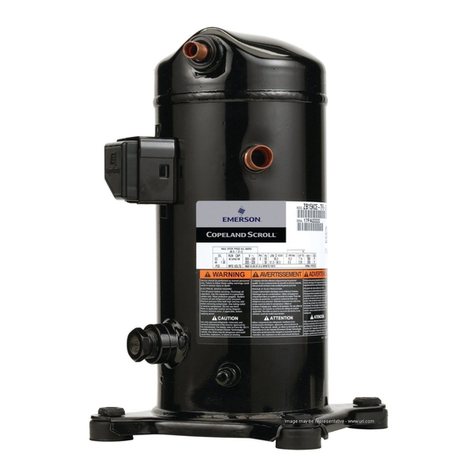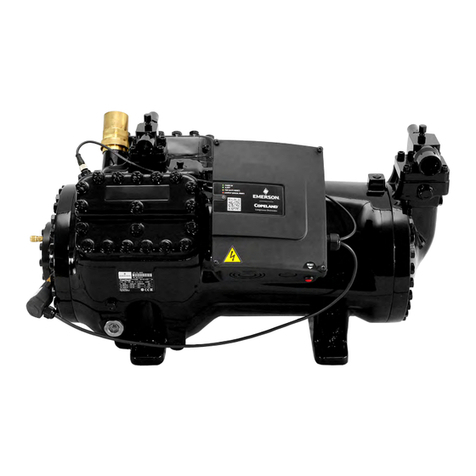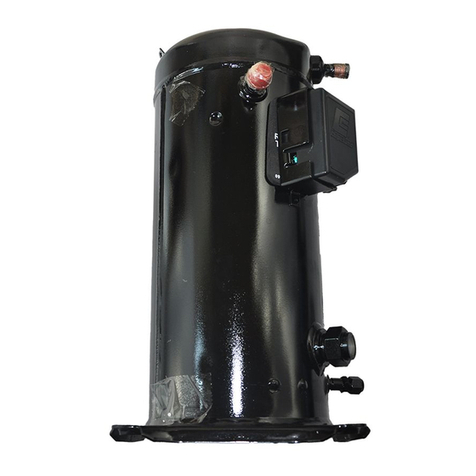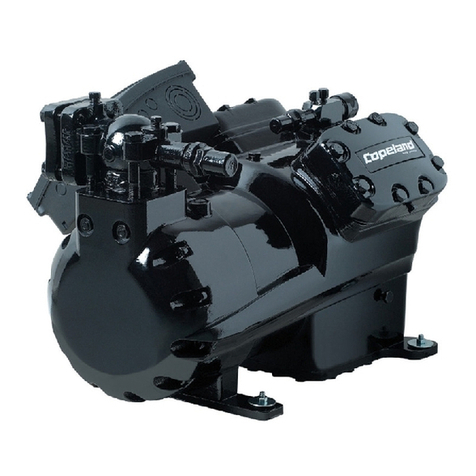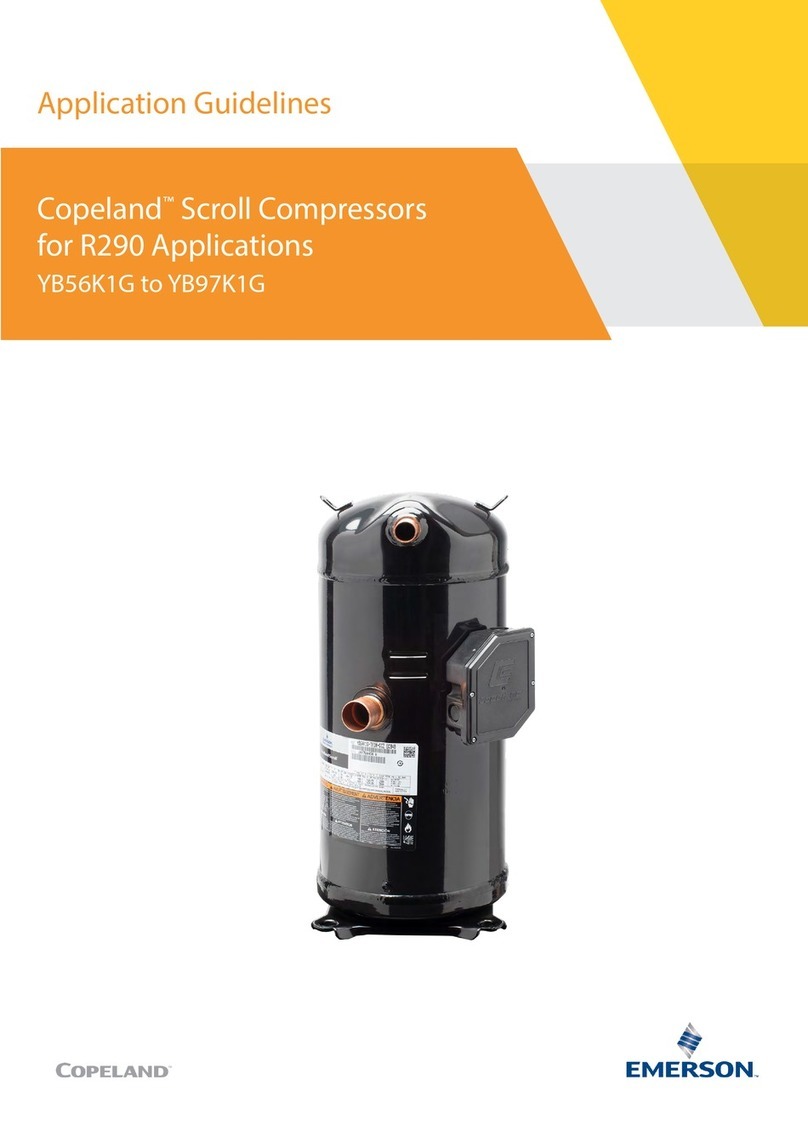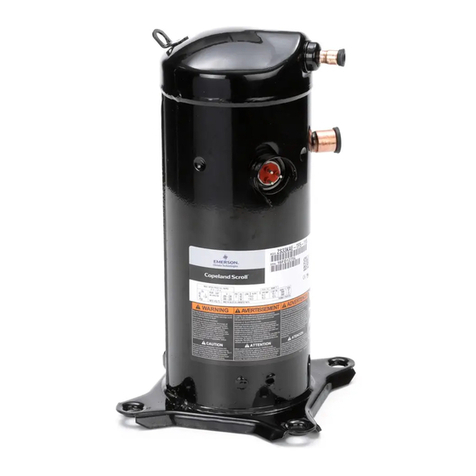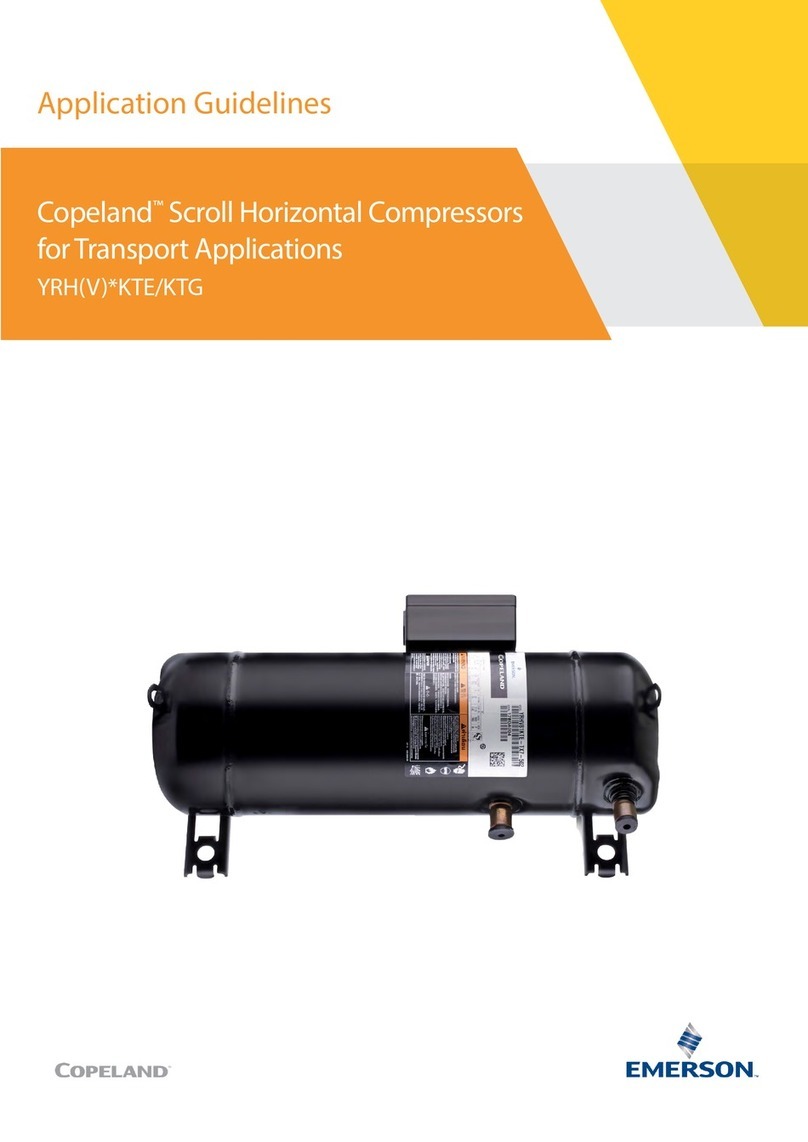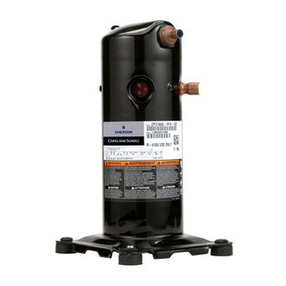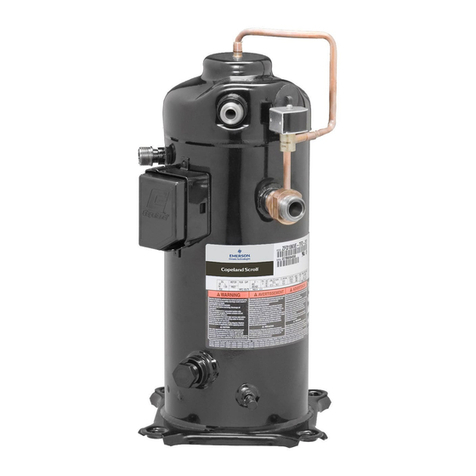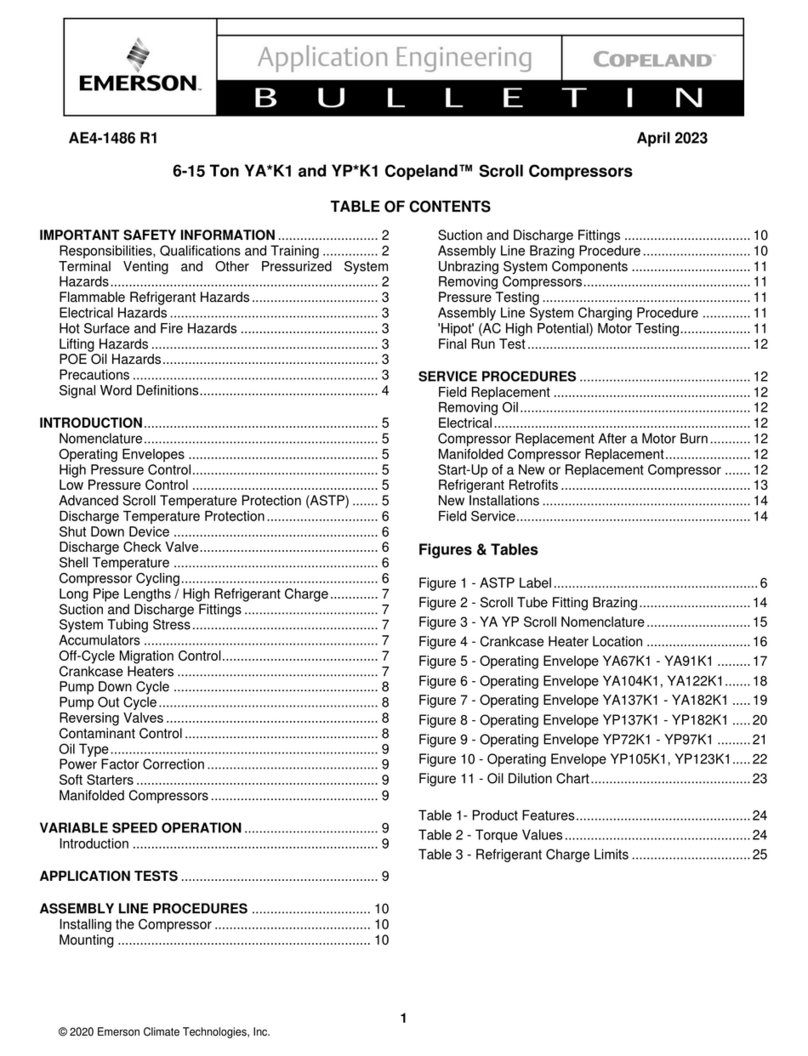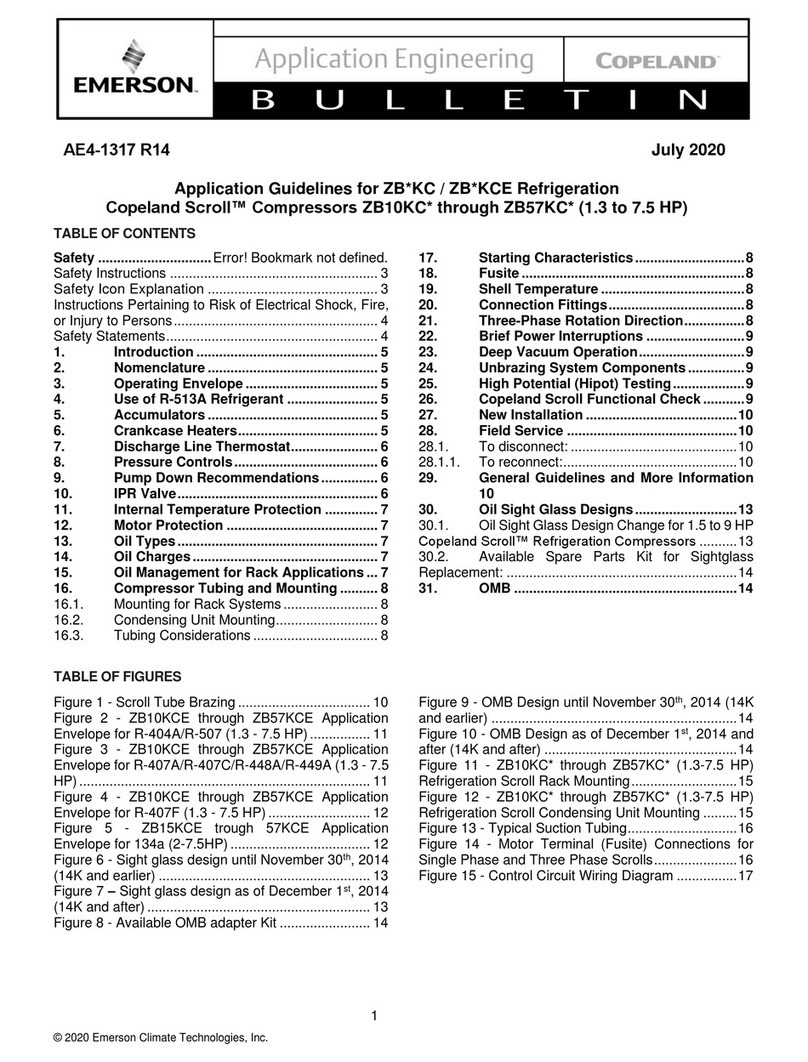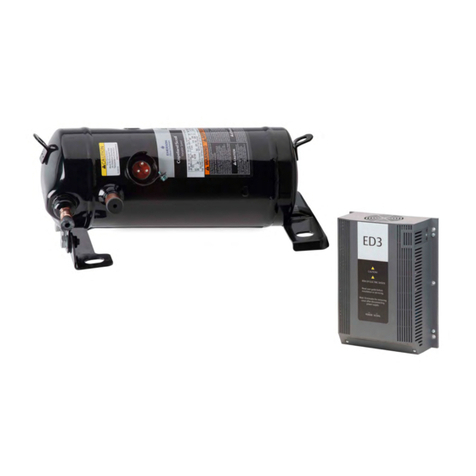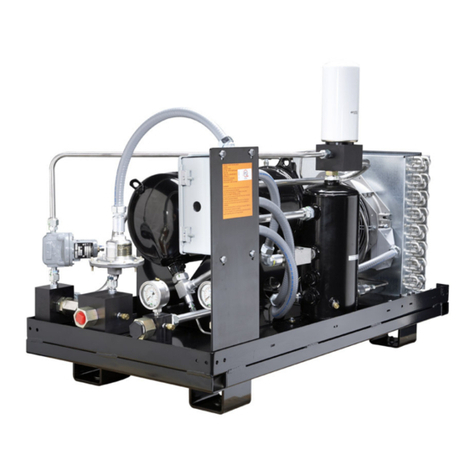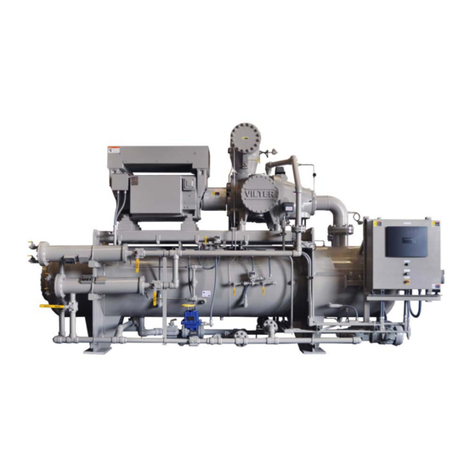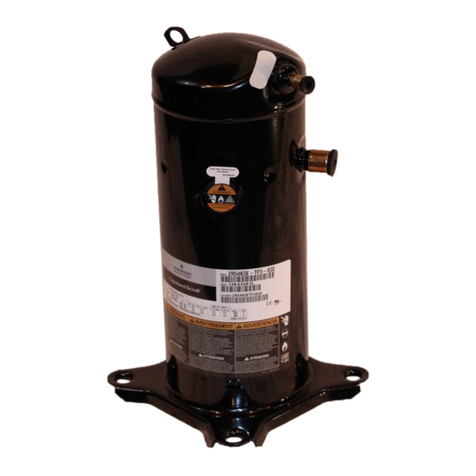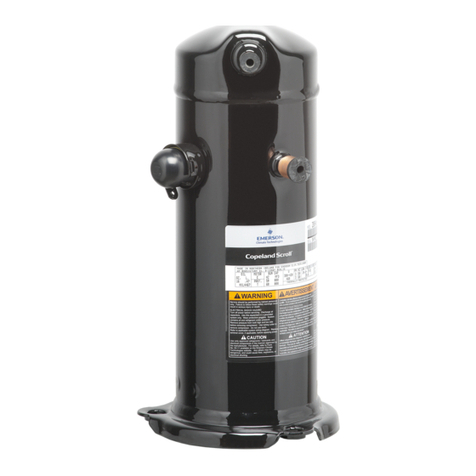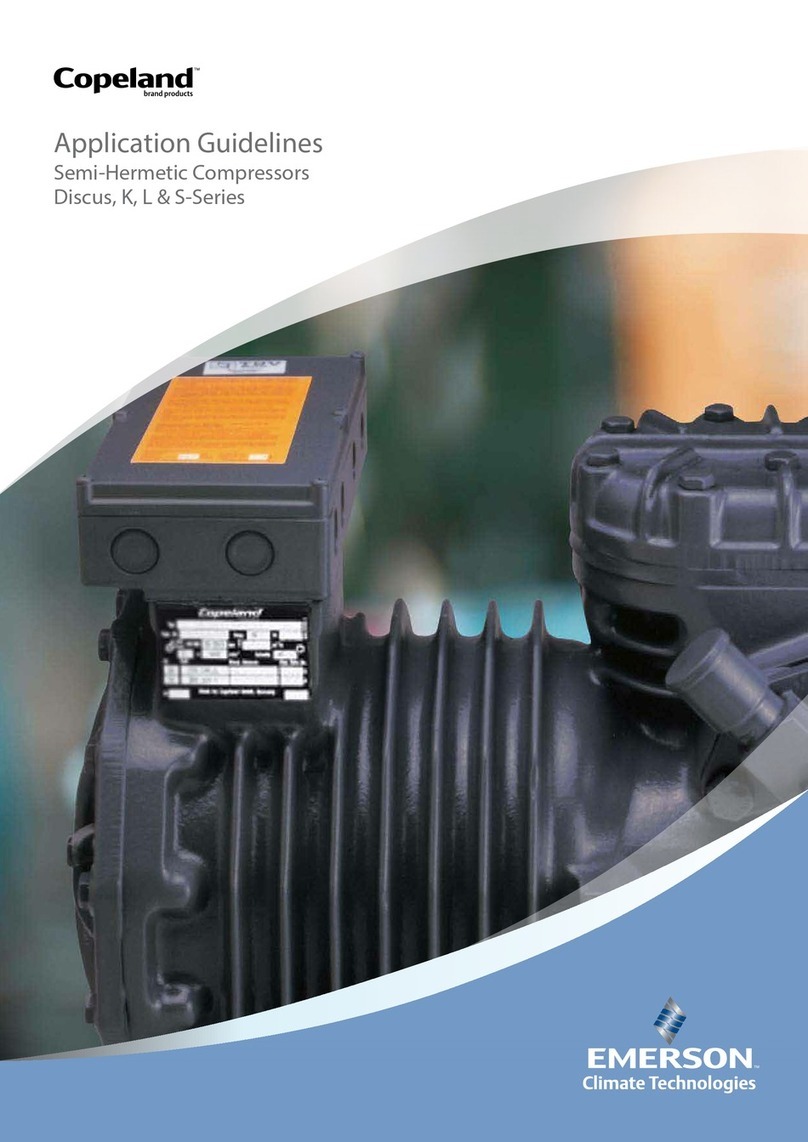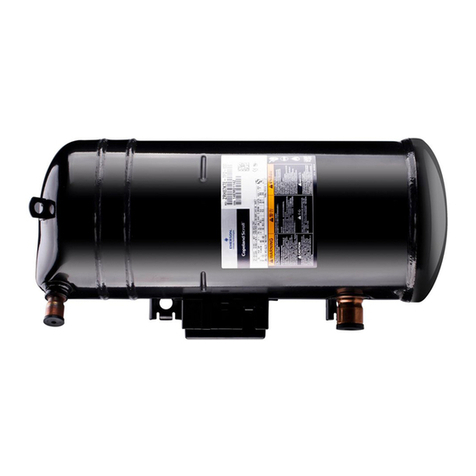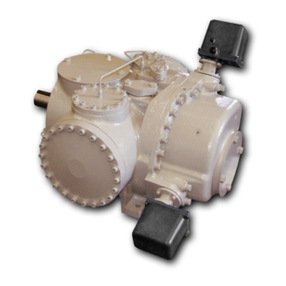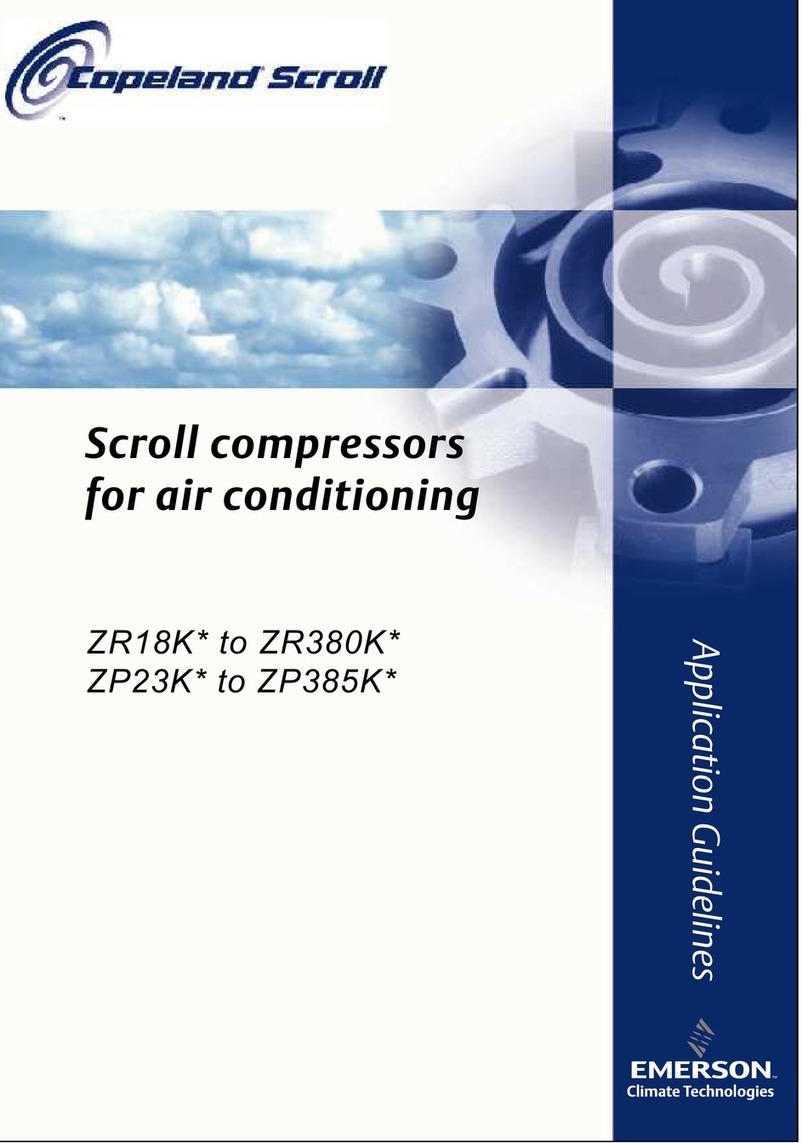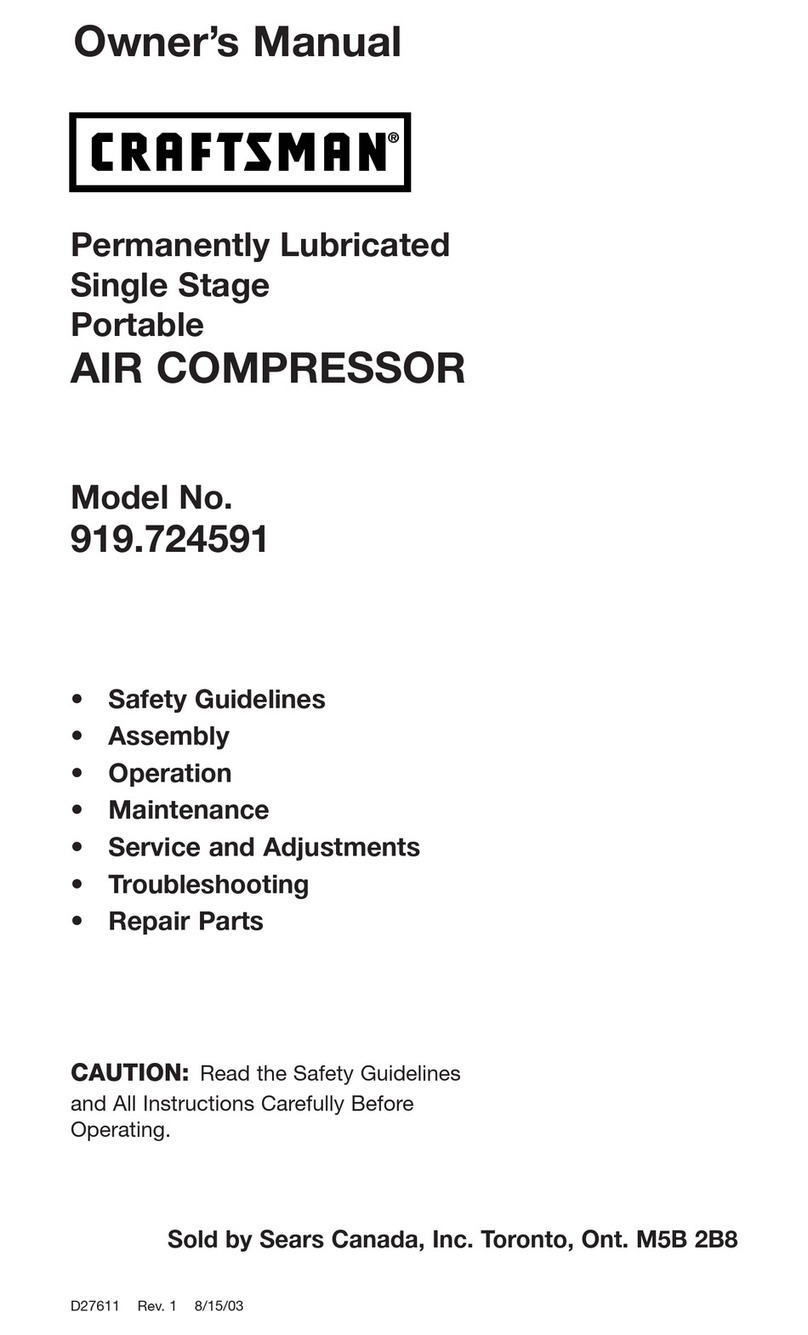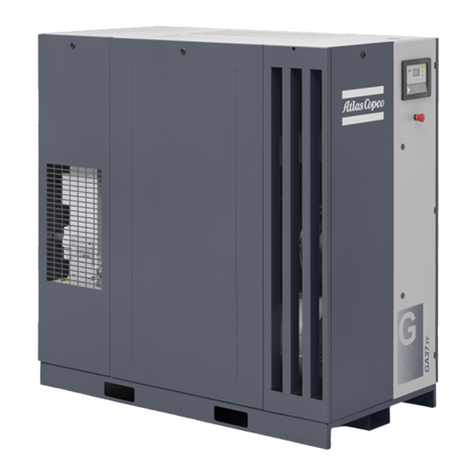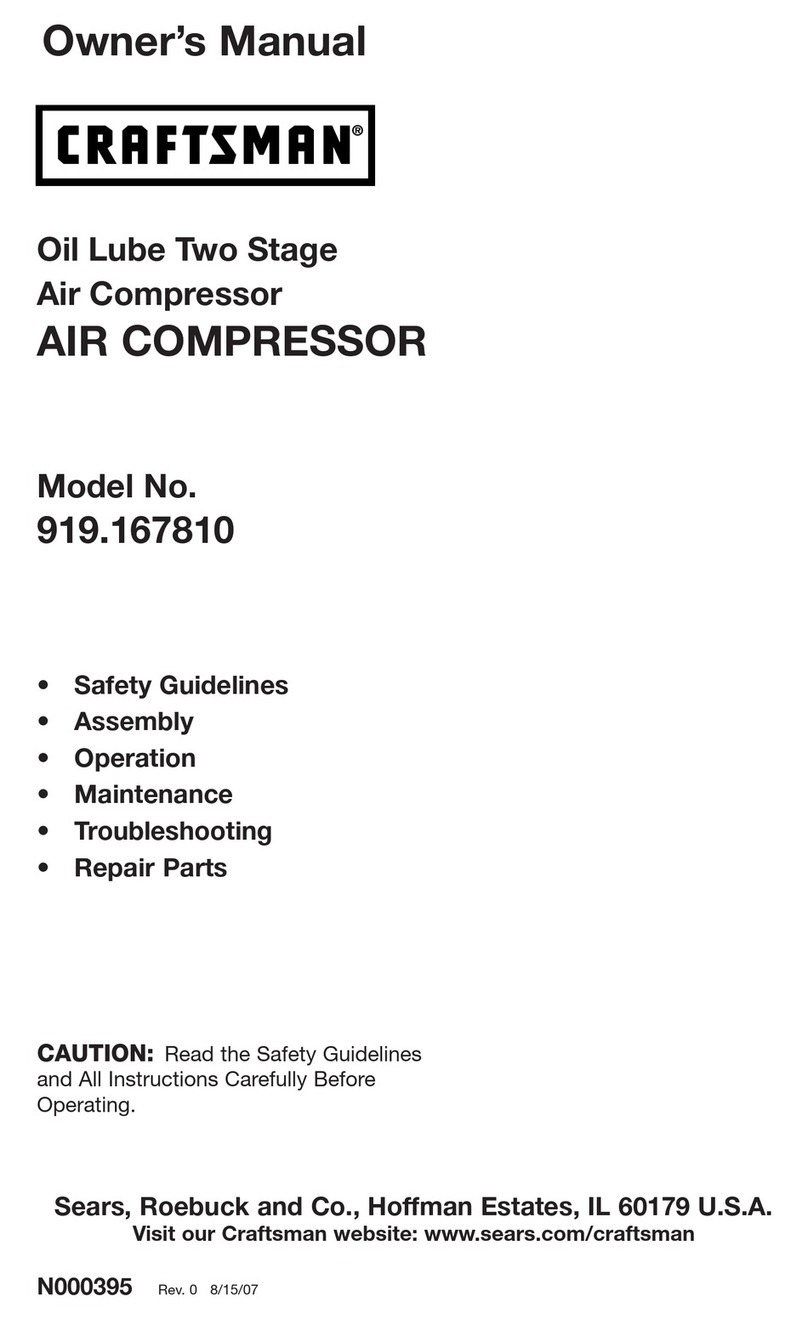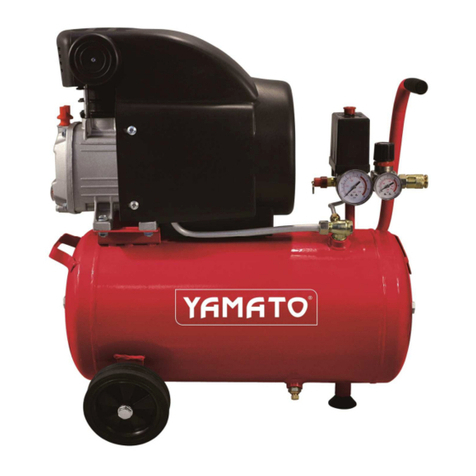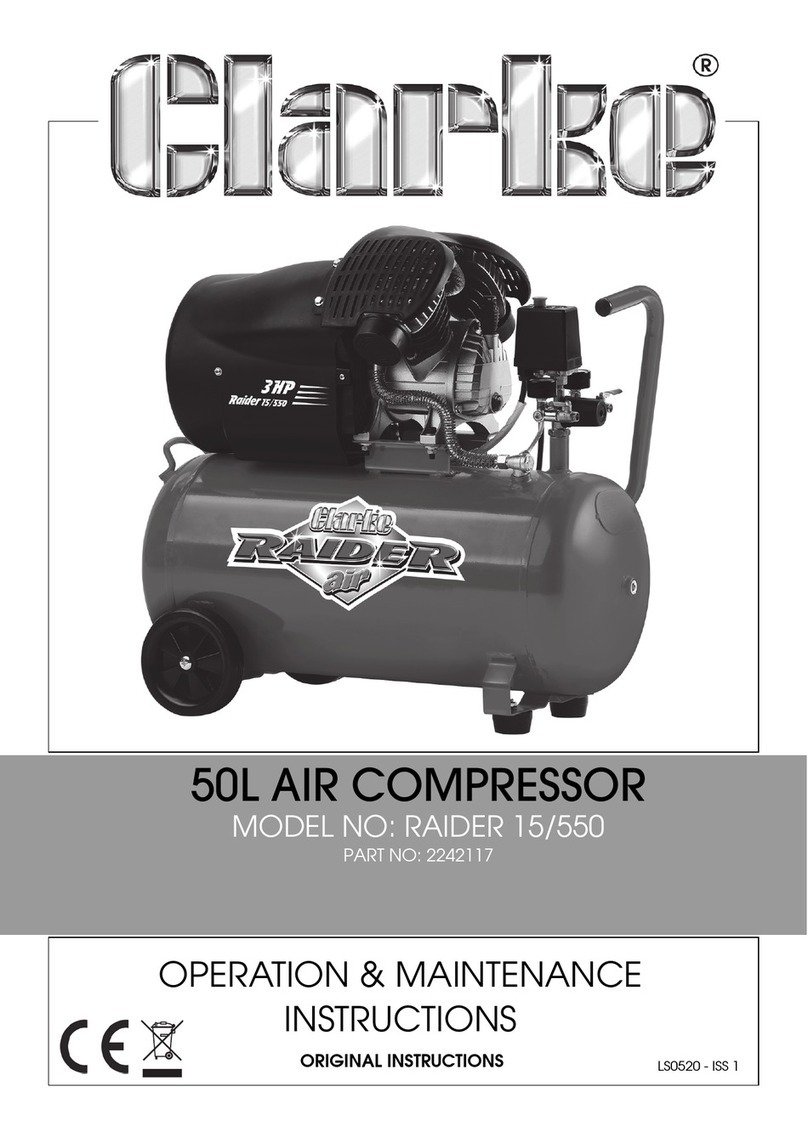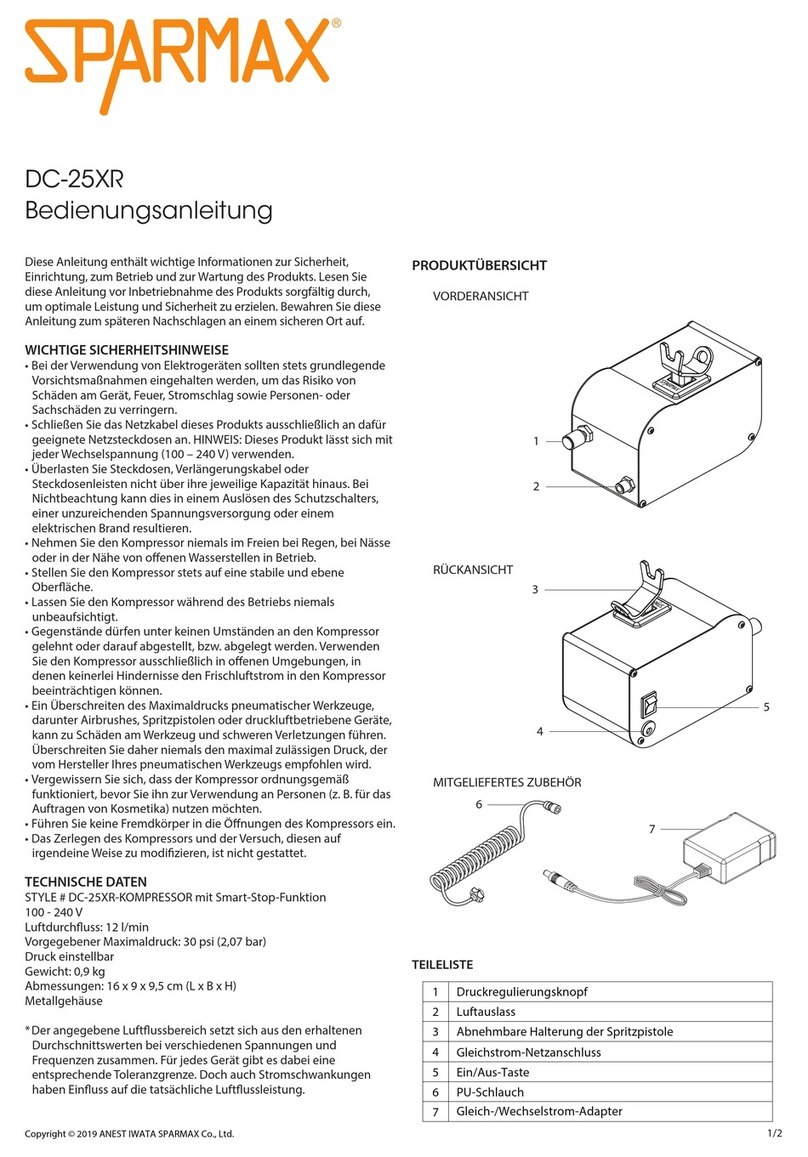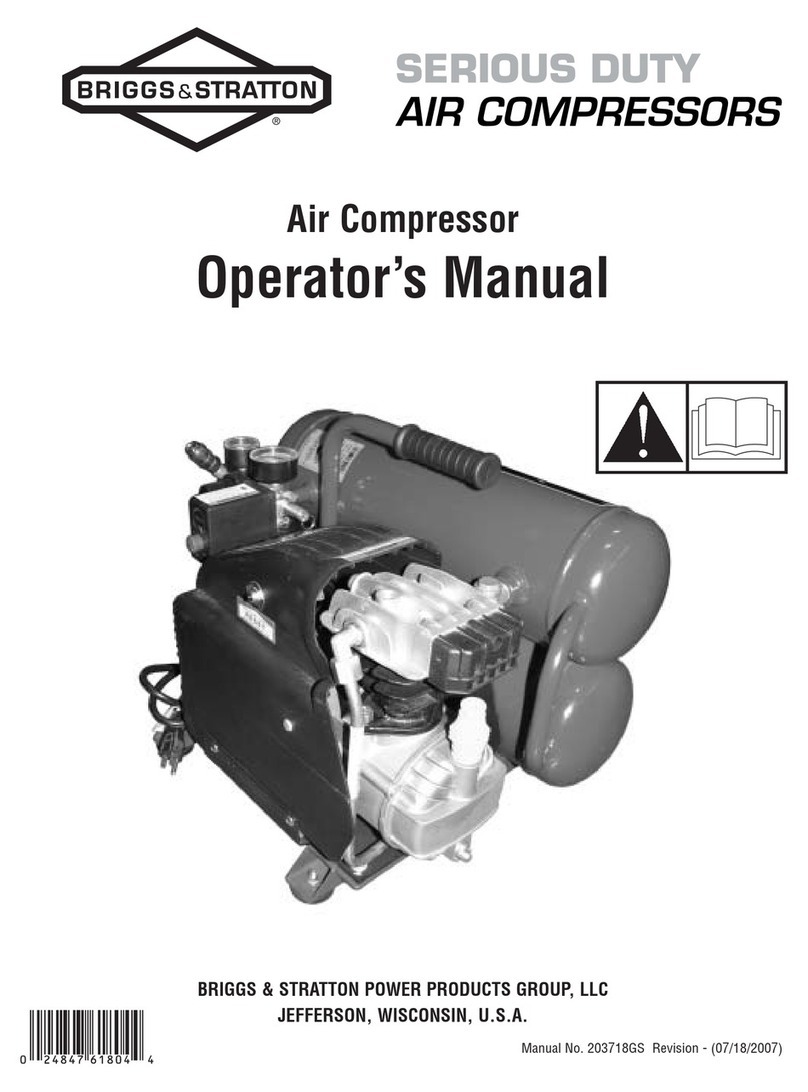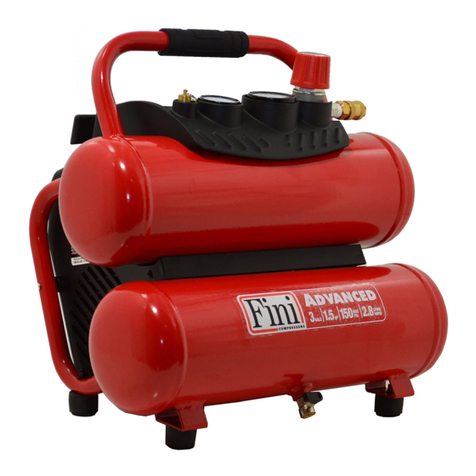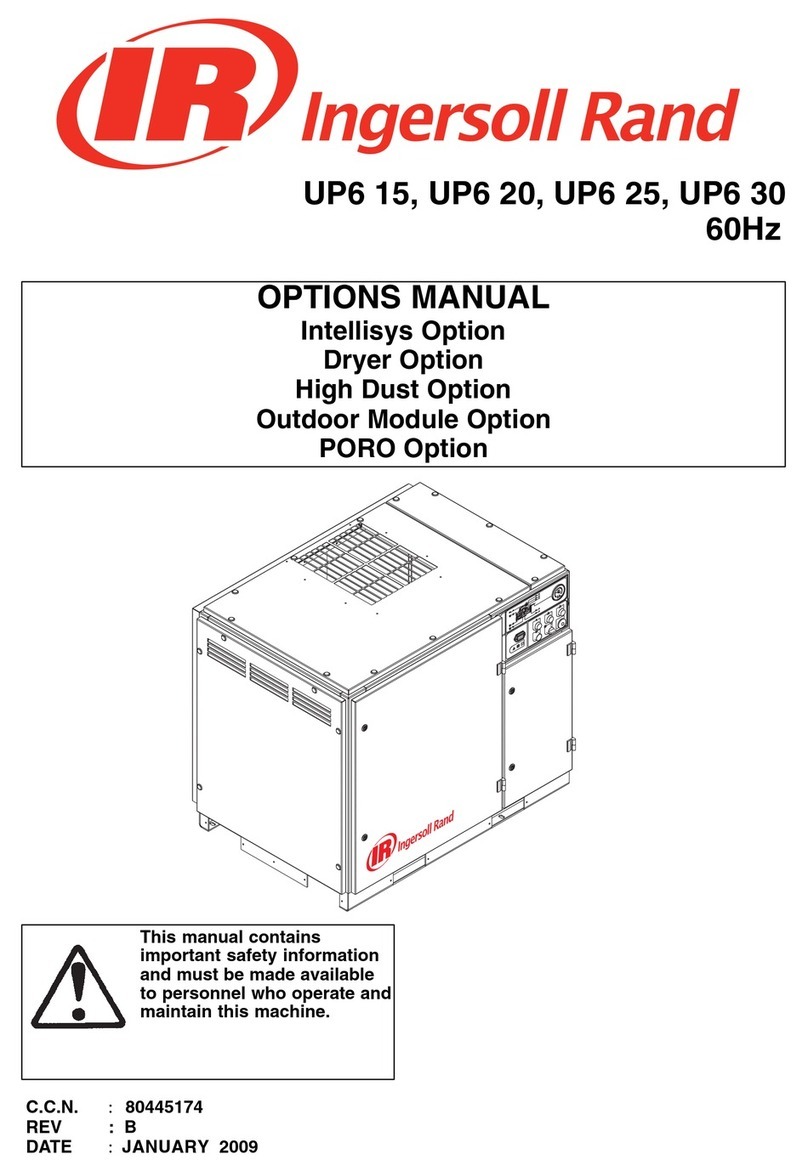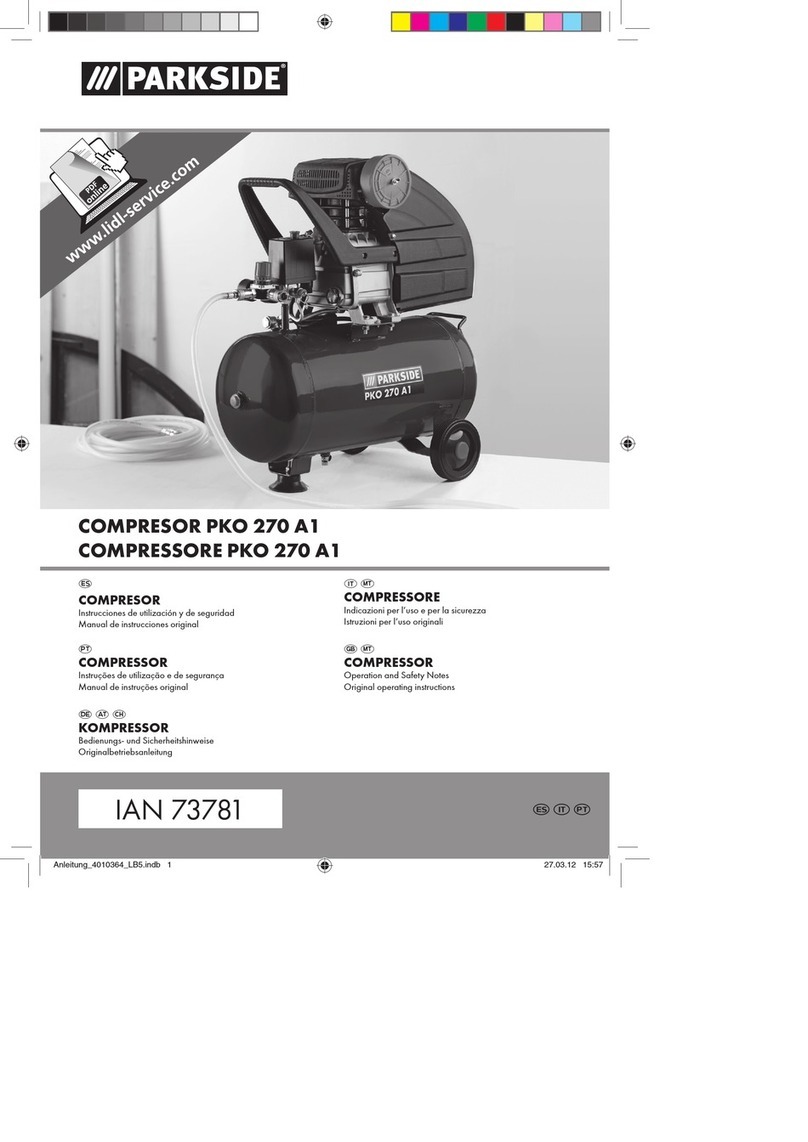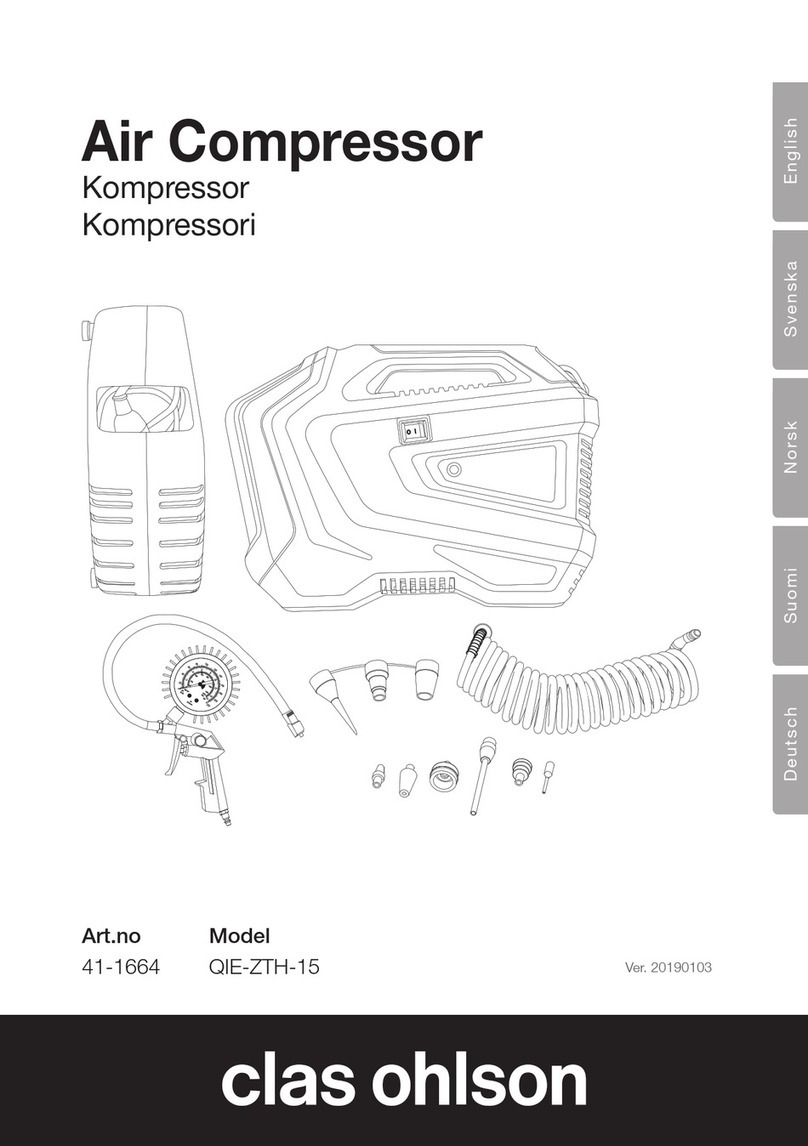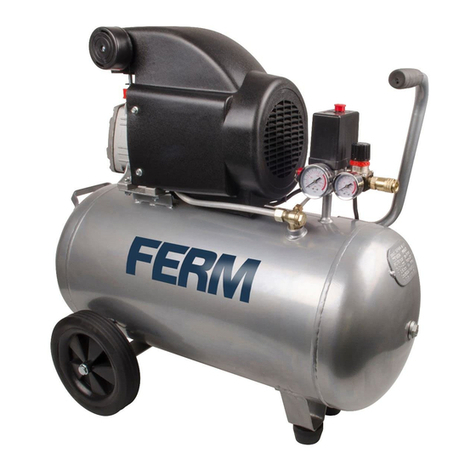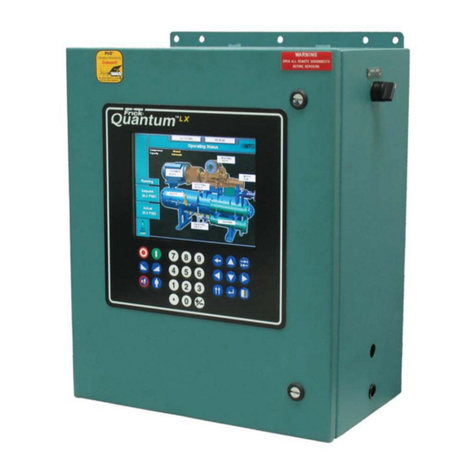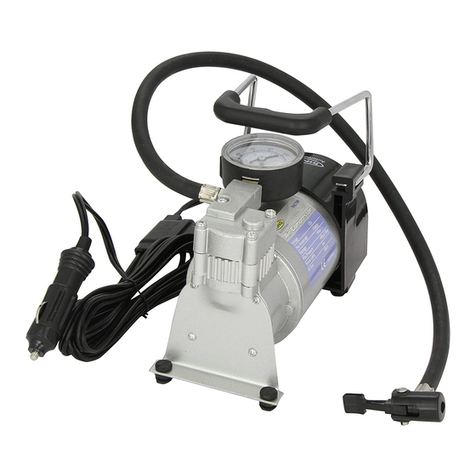
AE4-1312 R2
© 2010 Emerson Climate Technologies
Printed in the U.S.A.
2
operation since backup heat will make up the decit. A
low pressure control is recommended for loss of charge
protection in heat pumps for the highest level of system
protection. A cut out setting no lower than 25 psig (2
kg/cm2) for air conditioning and 7 psig (0.5 kg/cm2) for
heat pumps is recommended. The low pressure cut-out,
if installed in the suction line to the compressor, can
provide additional protection against a TXV failed in the
closed position, outdoor fan failure in heating, a closed
liquid line or suction line service valve, or a blocked liquid
line screen, lter, orice, or TXV. All of these can starve
the compressor for refrigerant and result in compressor
failure. The low pressure cut-out should have a manual
reset feature for the highest level of system protection. If
a compressor is allowed to cycle after a fault is detected,
there is a high probability that the compressor will be
damaged and the system contaminated with debris from
the failed compressor and decomposed oil. If current
monitoring to the compressor is available, the system
controller can take advantage of the compressor TOD
and internal protector operation. The controller can lock
out the compressor if current draw is not coincident with
the contactor energizing, implying that the compressor
has shut off on its internal protector. This will prevent
unnecessary compressor cycling on a fault condition
until corrective action can be taken.
Quiet Shut down
All scrolls in this size range have one of several
types of “quiet” shutdown solutions. The ZR..KC/K3/
K4 Scrolls up to four tons use a cam-type device that
separates the scrolls when they are driven backwards
as high-pressure gas equalizes from the high side
of the compressor to the low side during shutdown.
Larger scrolls with 70 frame motors through ZR61 use
a different type of cam that stops backward rotation
during shut down. Models ZR68KC through ZR81KC
will continue to be built with the uid brake design,
so a momentary reverse rotation sound will be heard
from these compressors. The newer ZR..KA scrolls
incorporate a non dynamic discharge port check valve
that prevents high pressure gas trapped in the dome
from returning through the scroll set. All of these quiet
shut down solutions allow the scroll compressor to
restart immediately even if the system is not equalized
eliminating the need for a time delay. Development
testing should include a review of the shutdown sound
for acceptability in a particular system. Also refer to
section on “Brief Power Interruption”.
Discharge Check Valve
A low mass, disc-type check valve in the discharge tting
of the compressor prevents the high side, high pressure
discharge gas from owing rapidly back through the
compressor. This check valve was not designed to be
used with recycling pump down because it is not entirely
leak-proof.
Motor Protector
Conventional internal line break motor protection is
provided. The protector opens the common connection
of a single-phase motor and the center of the Y
connection on three-phase motors. The three-phase
protector provides primary single-phase protection. Both
types of protectors react to current and motor winding
temperature.
Field Replacement of obsolete Single Phase ZR*K1
or ZR*K2 with Equivalent Capacity ZR*K3/K4/KA/
KC, Scroll Compressors
The discharge and suction tting sizes as well as the
mounting foot pattern of the new models are identical
to the ZR*K1 or ZR*K2. Tubing location is identical in
most cases for easy eld replacement. The ZR*K1
has an external top cap thermostat to limit discharge
temperature. This feature has been replaced by the
Therm-O-Disc®located inside the new scrolls. When
replacing the ZR*K1, the top cap thermostat wires
must be removed and the control circuit wires spliced
together. See section on Compressor Replacement
after Motor Burn for further tips on eld replacement.
The replacement compressor will need a new run
capacitor if the old capacitor is more than 5 microfarads
different or the voltage rating of the old capacitor is
lower than the new one. See compressor nameplate
or Table 4 for recommended run capacitor. Note that
the ZR*KA may only be used to replace compressors
used for A/C, not heat pumps.
Application Considerations
The Copeland Scroll compressor has a number of
application characteristics that are different from those
of the traditional reciprocating compressor. These are
detailed below.
Accumulators
The use of accumulators is very dependent on the
application. The Copeland Scroll’s inherent ability to
handle liquid refrigerant during occasional operating
ood back situations make the use of an accumulator
unnecessary in standard designs such as condensing
units. Applications, such as heat pumps with orice
refrigerant control, that allow large volumes of liquid
refrigerant to ood back to the compressor during
normal steady operation can dilute the oil to such an
extent that bearings are inadequately lubricated and
wear will occur. In such a case an accumulator must
be used to reduce ood back to a safe level that the
compressor can handle. To test for ood back conditions
